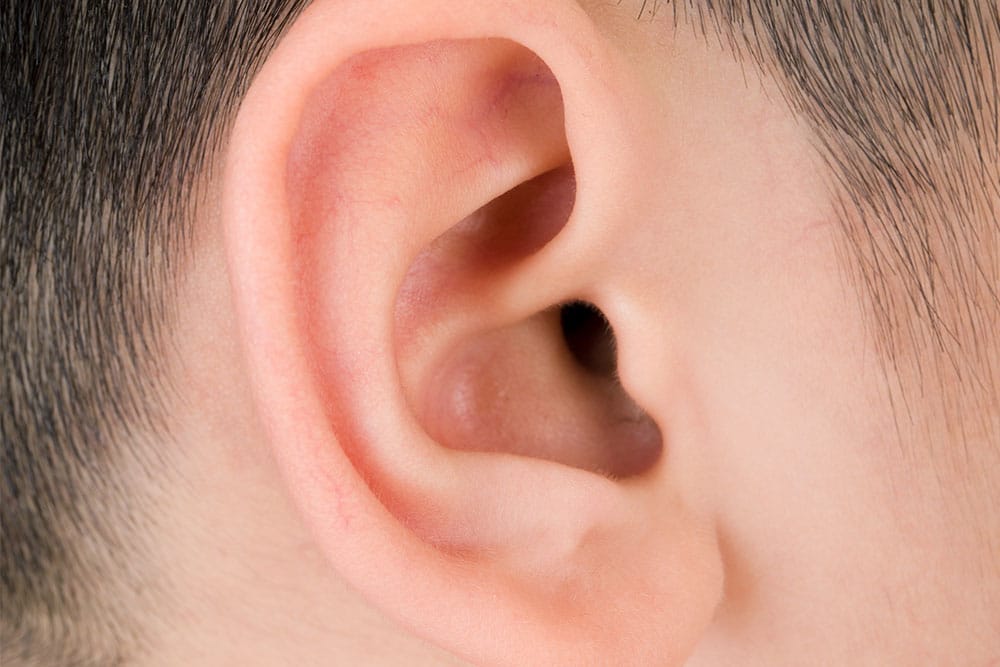This is a bit of a trick question, as your ears actually clean themselves. Ear wax isn’t dirty, it is a naturally occurring substance that protects your delicate ear canals and eardrums by keeping dust, dirt and other debris out and helping to prevent infection.
In a healthy ear, this wax is carried out in a ‘conveyor belt’ motion by the skin lining of your ears, meaning there is no need to actually remove it. The exact process is one of the miracles of the human body.
The outer third of the ear produces the wax from a mix of oil secretions and dead skin cells, as well as dirt, dust and hair. The wax then naturally migrates out of the ear canal by movement of the superficial skin layer which is assisted by the way our jaw moved when we talk and ear. Once it gets to the external ear, it naturally falls out or can be wiped away.
However, sometimes ear wax can become impacted, which we will discuss later.
Which Part of My Ears do I Need to Clean?
The only part of your ears that you need to clean is the exterior part. Usually, a daily shower will be enough to keep this part clean, but if you work in a dirty or dusty environment, you can also use a damp cloth to wipe around the outside and behind the ears.
Under no circumstances should you ever clean the inside of your ears. Using candles, cotton buds, fingers and anything else to remove ear wax will only push it further inside the ear and could cause the wax to become impacted.
How to Prevent Excessive Ear wax Production
A variety of factors can lead to increased ear wax production, including:
- Using cotton buds and other objects to clean your ear
- Wearing hearing aids
- Working in dirty and dusty places
- Leading a stressful life
- Having narrow or hairy ear canals
Excessive ear wax production can also be a result of genetics. If people in your family suffer from this problem, there’s a strong chance you will too.
There’s obviously nothing you can do if you’re naturally predisposed to excessive ear wax production, or if your work requires you to operate in a dusty or dirty environment. But, you can look after yourself and try and remove stressful elements from your life. That could mean getting more sleep, exercising more or just getting your work/life balance right.
The best thing you can do is refrain from cleaning the wax out of your ears; think fingers, hairpins, cotton buds and ear candles here. All come with an element of risk and may push wax further down the canal.
How Do I Know if I’m Producing Too Much Ear Wax?
The most common feeling is an overriding sense of a full or blocked ear. This can often be accompanied by hearing loss. Over the course of a day, you may have moments of relief before it blocks up again. This is because jaw movement may temporarily create gaps in the wax blockage before it comes back together again.
In addition to these symptoms are sensations it’s also common to experience:
- Tinnitus (a ringing in the ears)
- Feeling of fullness
- Itching
- Pain
- Discharge
- Odour
- Cough
Removing Ear Wax Safely
The safest way to remove wax is with a professional’s help. Click here to learn more about home remedies, as they may be unsafe. The only home method professionals recommend are ear wax softening drops, but these can only be used if your eardrum is not perforated and you have never had any surgery on your ears. These drops can be purchased at your local chemist and they work by softening the earwax so it can fall out naturally.
These are the same drops that are used in a professional setting in conjunction with micro-suction and curettage techniques to effectively remove built up wax under direct observation.
What Is Micro-Suction?
One of the safest and gentlest ways to remove impacted ear wax that won’t respond to softening drops is micro-suction. Sometimes the wax is just too deep, dry or large for the softening drops to make a difference.
Micro-suction in Earworx clinics is performed by an experienced registered nurse. Your nurse uses small instruments combined with gentle suction to gently dislodge the wax and remove the blockage. The best part about this procedure is that the relief is almost immediate and you will also be supplied with the information you need to prevent a recurrence of impacted ear wax.
So, if you want cleaner ears, you need to put those cotton buds down, lead a stress-free lifestyle and visit a professional if you sense a problem.
Keep in mind that it is important to consult a medical professional for any unresolved symptoms following wax removal.





